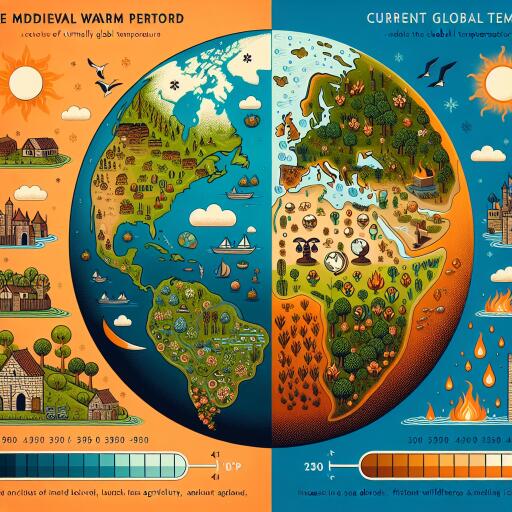
At a Glance: Comparing the Medieval Warm Period with Today’s Climate Temperatures
The climate history of our planet is a rich tapestry that spans across eons, offering insights into how Earth’s weather patterns have evolved over millennia. Within this vast chronology, specific periods, such as the Medieval Warm Period, stand out, presenting opportunities to understand past climates and compare them with our present-day global temperatures.
Understanding the Medieval Warm Period
The timeline of Earth’s climate history is segmented into various epochs, each characterized by distinct climatic features. Among these, the Medieval Warm Period (MWP) occupies a special niche. This interval, stretching roughly from 800 to 1200 CE, is often cited when discussing historical climate variations. It was initially believed to be a time when global temperatures were comparably high, at least in the context of the last two millennia.
Historically, the evidence supporting the warmth during the MWP came predominantly from paleoclimatic records in the Northern Hemisphere. Early interpretations suggested that this warming was a global phenomenon, linked closely with human prosperity in certain regions. However, as the field of climatology advanced, so too did our understanding of this period.
Regional vs. Global Climate Effects
Emerging research and refined methodologies have shed new light on the MWP, indicating that the warm conditions were not uniformly experienced across the globe. This revelation comes from expanded reconstructions of past climate conditions, which now incorporate data from a wider range of geographical locations.
For instance, while regions of Europe basked in relatively warm temperatures, other areas, such as the Pacific Ocean, experienced cooler climates. This nuanced view of the MWP highlights the regional nature of climatic episodes during the Common Era, challenging the notion of their global extent.
The Little Ice Age and Beyond
Following the MWP, the climate entered a cooler phase known as the Little Ice Age, lasting until the mid-19th century. Like the MWP, the cooling effects of this period were not uniform worldwide. Research published in the journal Nature illustrates the varied timing and intensity of cold temperatures across different regions, underscoring the complex nature of historical climate patterns.
Contrastingly, the 20th century stands out as exceptionally warm, affecting over 98% of the planet. This recent warming is significant, not just for the record-high temperatures but also for its extensive global reach—an occurrence unmatched in the last 2,000 years.
Modern Implications
The evidence points to a stark conclusion: the current phase of global warming is unparalleled both in its intensity and its coverage. Understanding the differences between past periods like the Medieval Warm Period and today’s climate crisis is critical. It underscores the uniqueness of the situation humanity faces now, driven by anthropogenic factors far removed from the natural variabilities seen in the past.
As we navigate the challenges of a warming planet, reflecting on these historical climate episodes provides perspective on our current situation. It reinforces the need for urgent action and innovation in addressing climate change, ensuring a sustainable future for all.
This deep dive into the Medieval Warm Period versus today’s climatic conditions reveals the evolving nature of our planet’s climate. It serves as a reminder of the intricate balance between natural and human-influenced factors shaping Earth’s weather patterns over the ages.





Leave a Reply